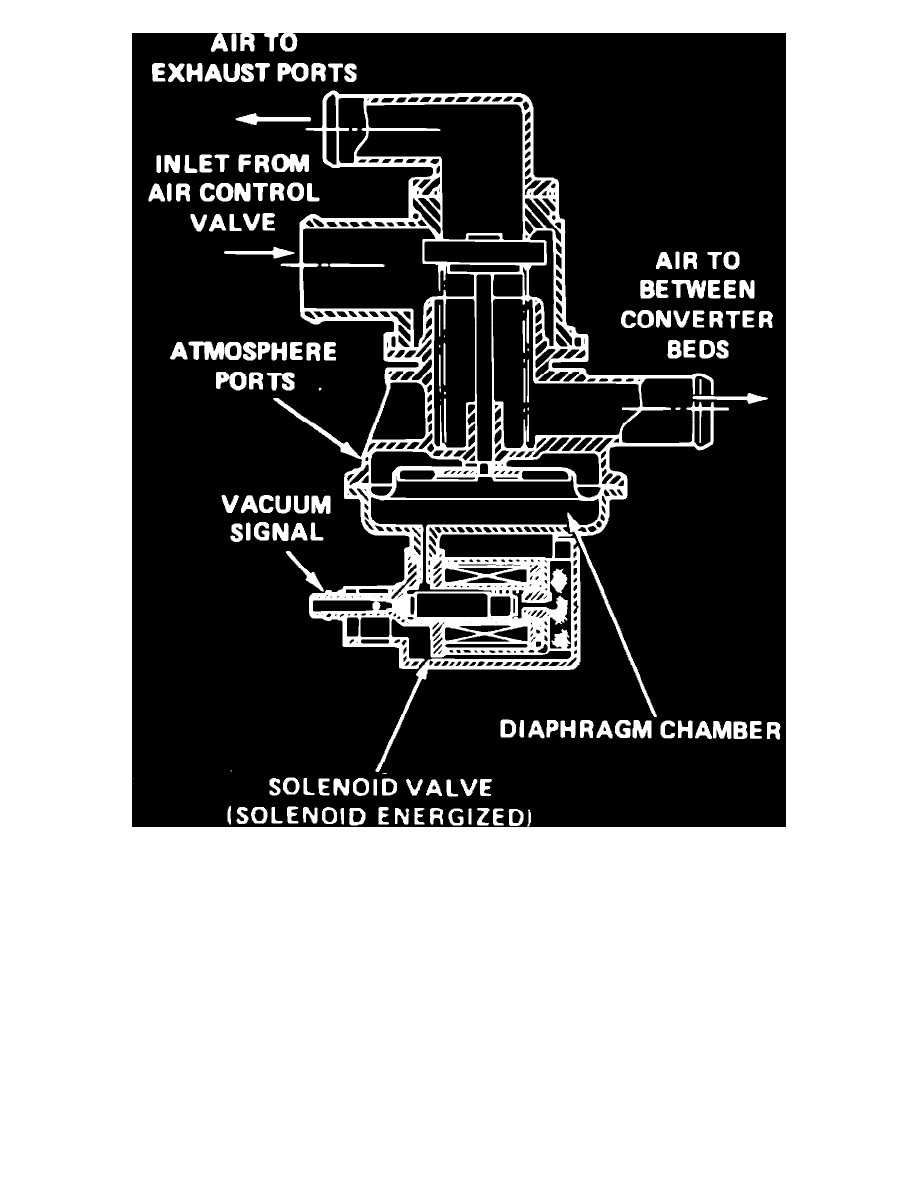Regal V6-231 3.8L Turbo VIN 7 FI (1986)

Fig. 12 Electric air switching valve operation
Models with this system have 2 valves which provide air control and air switching. The system can be identified by the separate mounting of the 2
valves or by the vacuum divert hose position on the integral type EAC/ES valve, Fig. 10. The first valve (EAC) directs air pump output into the system,
or diverts it to the air cleaner. The second valve (ES) directs EAC valve output to either the exhaust ports or catalytic converter. Vacuum signals,
controlled by an Electronic Control Module (ECM), operate both valves.
During normal operation, the EAC valve solenoid is energized by the ECM, Fig. 11. Air pump output is directed to the air switching valve unless
there is a sudden rise in intake manifold vacuum, such as during deceleration. A sudden vacuum rise closes the valve, diverting air pump output to the air
cleaner until the vacuum has equalized in the decel timing assembly.
Under certain operating conditions, the ECM de-energizes the EAC solenoid to provide electric divert. When the solenoid is de-energized pressurized
air enters the decel timing chamber and closes the valve, causing air pump output to divert to the air cleaner. Excess air pump output is also exhausted to
the air cleaner through relief valve in the EAC assembly, Fig. 11.
The Electric Air Switching (ES) valve directs EAC valve output depending upon engine operating mode. When engine is in ``Open Loop'' mode the
ECM energized the ES valve solenoid, Fig. 12, and vacuum opens the air passage to the exhaust ports. When engine is in ``Closed Loop'' mode the
solenoid is de-energized, the vacuum signal is blocked, and spring tension opens the air passage to the catalytic converter.
